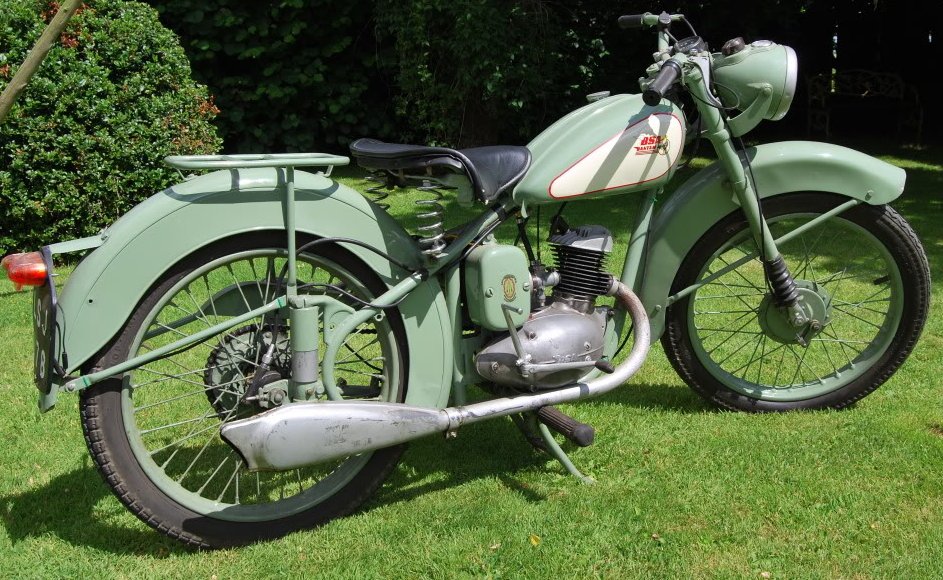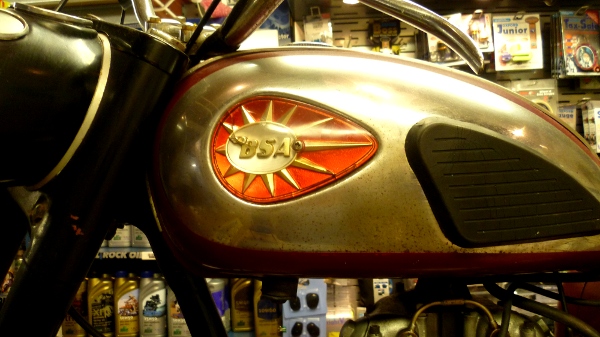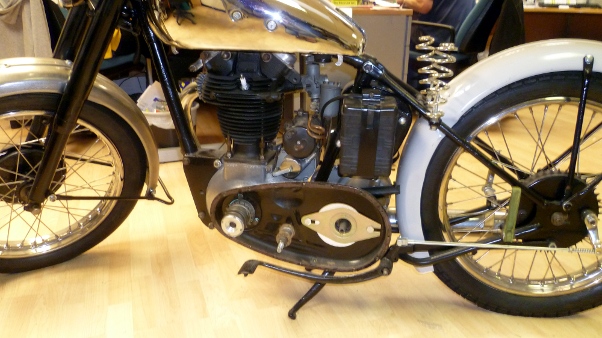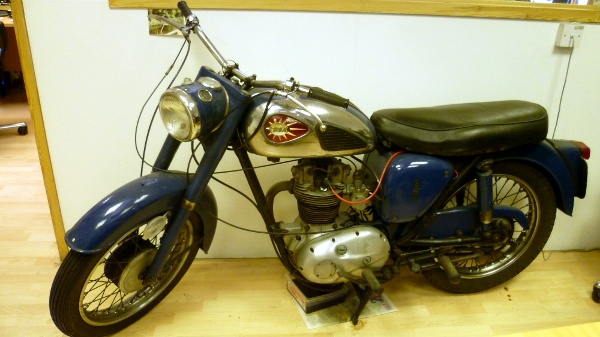Bike of the week - The BSA Bantam
Bike of the not-really-every week but hey - it's the lovely little Bantam this week - did you have one?
Our chosen bike this week is the BSA Bantam – produced in great quantities it was many people's first introduction to motorcycling and has a fond place in the hearts of many. Here's the story of its evolution....
Fourteen gunsmiths
The BSA (Birmingham Small Arms) factory, eventual progenitor of, among other motorcycles, the much loved BSA Bantam, was started in 1861 by a group of fourteen gunsmiths (fourteen gunsmiths sounds like a Grimm's fairy tale!)
They had all individually supplied the British Army with guns for use in the Crimean war and then, finding this a lucrative business, decided to pool their knowledge and resources and united to open an arms factory. The only problem which they had not foreseen was that, although they had made money during the Crimean war, their products were not marketable in a peacetime economy as there were not so many people to shoot, so they had to do some quick thinking.
....Here is an aside....
In fact the Crimean war seems to have involved a lot of innovation! Not only in the use of lots of small arms, provided very probably by those same aforementioned fourteen gunsmiths, but also there is a woollens theme with Lord Cardigan leading the charge of the Light Brigade into the valley of Death (terrible) during the battle of Balaclava and Lord Raglan who was the overall commander with his nice sleeves! Anyway I digress!
Back to the story....
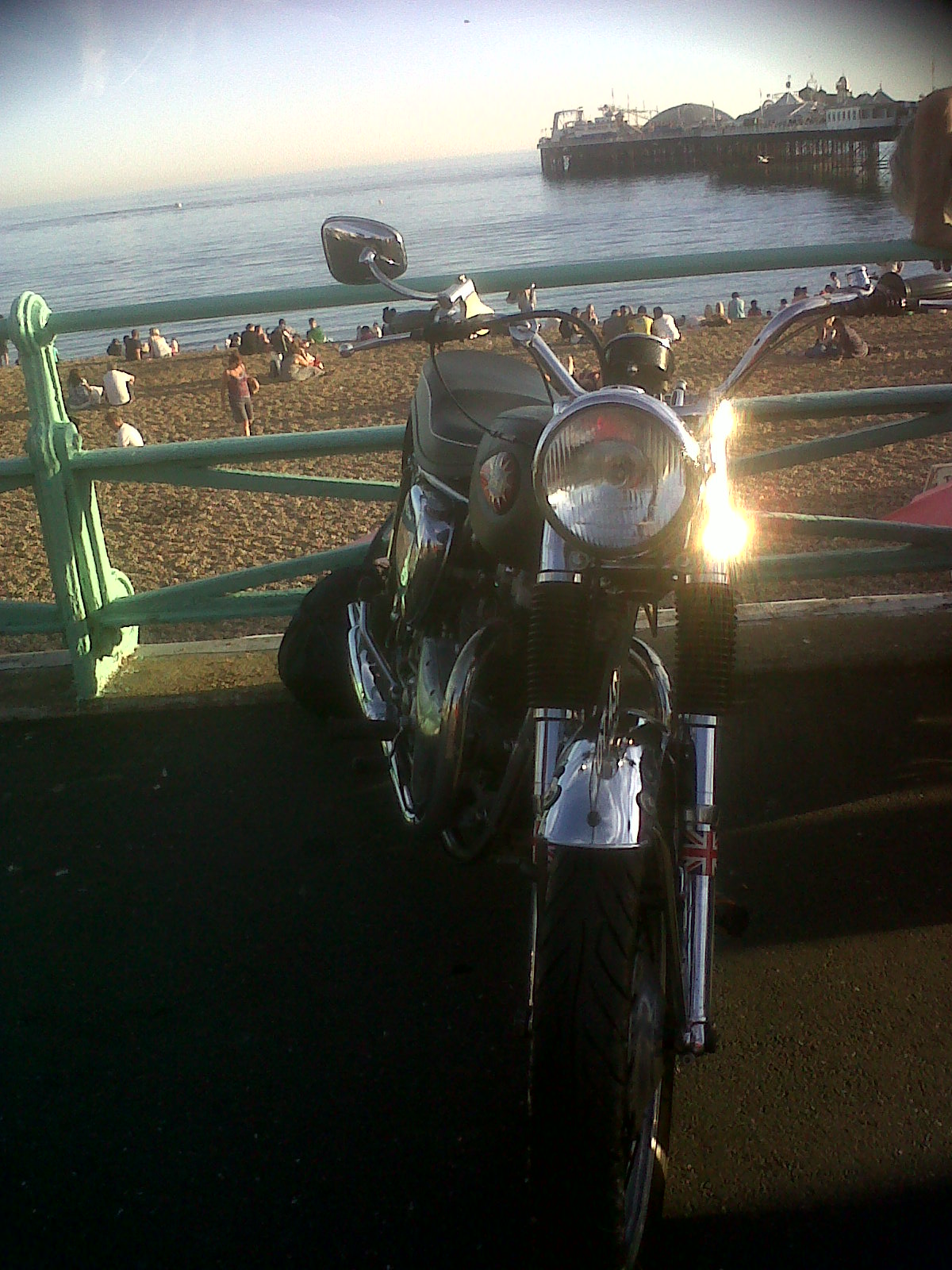
Here's what BSAs look like down our way
When the BSA factory found that it didn't have enough orders for arms to fulfill, it did a quick volte-face and after a brief closure in 1878 it re-opened, and rose phoenix-like from the ordnance ashes, as a manufacturer of bi and tricycles, albeit with the famous piled rifles logo as a tribute to their gun based origins.
The factory then spent a quite few years yo-yo-ing between the manufacture of rifles and bicycles until in 1903, with an eye for the way technology was going, BSA began to experiment with prototype Motorcycles.
WW1
Obviously during WW1 the demand for weaponry increased again, so BSA, who were already perfectly placed to meet this need, upped its arms manufacturing, making 1.5 million rifles, shells, equipment and, yes, motorcycles for use by the military.
The business was able to expand due to the war and the BSA factory output was so great that it employed 20,000 people.
Between the wars motorcycle production began to really take off for domestic use and the BSA advertising slogan 'One in four is a BSA' shows how ubiquitous these attractive and useful motorcycles were becoming.
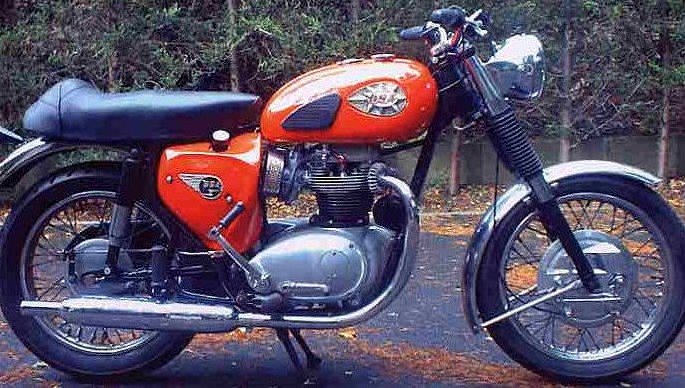
BSA with its distinctive tank badge logo
WW11
At the start of the second World War the directors of BSA were prepared, they had seen it coming, and expanded production out into 67 factories producing arms, M20 motorcycles for the armed forces and folding bicycles (70,000 of these in fact) for paratroopers to take with them on drops (or to be dropped on their own parachute) and unfold to use on landing. Although these bikes were light for the period they were still pretty heavy and apparently were dumped by paratroopers when they came to bumpy or scrubby ground as they were not entirely practical on the rough. They probably took out a few of the enemy in their own right – very heavy bicycle from above landing on your head, ouch!
Unfortunately, but not surprisingly, the BSA arms factories were a target for German bombers during the war and several hits were sustained with some injury and loss of life, which is partly why BSA spread its operations out into so many smaller factories dispersed around the country – to present a smaller target which was harder to find.
There'll be Bantams over the white cliffs of Dover....
After the war the design for the German DKW RT 125 motorcycle was handed over by Germany to Russia as part of Germany's war reparations, and this design was used to base the BSA 125cc Bantam motorcycle on. Really the Bantam was just the mirror image of the DKW with the gear box on the right hand side but now manufactured at the BSA factory in Birmingham. In fact the design from the German motorcycle was copied, in slightly different forms, in many countries and is the ancestor of many motorcycles today. It became the Harley Davidson Model 125 in the USA, the MOSKVA M1A in the USSR, in East Germany it became the MZ and it was also copied in Japan.
The Bantam went into production in the UK in 1948 and was made until 1971. Estimates for the total number produced range between 250,000 to half a million – whichever is correct that's an awful lot of them! As it's name implies – it is named after a small, nippy, colourful and feisty breed of chicken – for the time it was a small, lightweight and nippy runabout which suited the economical prudent mood of postwar Britain perfectly. It was affordable, costing only £60 during the 1950s and 60s and was easy to maintain. It was even used by the Post Office which used Bantam motorcycles for telegram and post delivery and were seen all over Britain painted 'Post Office Red'. Due to its popularity and success the BSA Bantam deserves some attention...
The BSA Bantam
The Bantam was a single cylinder two-stroke unit construction motorcycle with a cast iron barrel and an alloy head. The gearbox was initially three speeds which later went to four, fed through a wet clutch. The Bantam could reach speeds of 50mph with great fuel economy of 100miles to the gallon. The lighting came from a 27 Watt Wi-PAC geni-mag generator and the direct electrics meant there was no battery so the engine would need to be running for the main lights to work. There was a small battery which operated a smaller pilot bulb in the headlamp when the bike was parked though. The ignition could be of two types - either a Lucas battery powered coil in earlier machines (who remembers this with the nickname 'Prince of Darkness' due to its unreliability and propensity to plunge the rider into darkness?) or a Wi-PAC magneto in later ones. The magneto was on a composite assembly sitting inside the flywheel with its magnet inserts - windings gave power either directly to the lights (with a dry cell for when the engine was not running) or through a rectifier into a lead acid battery.
Design wise things changed a bit. The first D1 Bantams had telescopic forks and a fish tail exhaust but theses were mainly upgraded to a cylindrical silencer. Most models were available with refinements which the customer could choose, or had built in competition form. BSA chose a lettering system for their range of motorcycles and started with the letter D for their first two stroke motorcycles.
D1
The first one was the D1 which was available initially with a rigid rear suspension and within three years it had improved to include an optional plunger rear suspension. Because the front suspension had no damping the ride was a bit bouncy.
D3
The next model was the D3 major which was the first developmental step for the Bantam. It emerged in 1953 and boasted a modern foam filled pillion seat and had front suspension which was more substantial in volume with an enlarged cylinder with thermal cooling fins.
D175/B175
This version had a relocated spark plug and stronger front forks. The compression ratio was slightly lower at 9.5 and there was a separate headlight with high beam warning. The rear shock springs were exposed and the kickstart shaft strengthened.
Bushman
The Bushman was an off-road version which was designed particularly to export to Australia but 300 were sold in the UK. All Bushman models have a BB prefix.
Bantams are go!
One thing which evolved rather unexpectedly was the Bantam's introduction into competitions. Owners modified their Bantams, fitting non-standard sprockets and wider handlebars turning them into racing Bantams. The Bantam was one of the first bikes to be used in this way, Trials before that had been more professional events run by much larger bikes.
Getting bigger...
After the war things were looking good and having established itself as a successful and adaptable factory, in 1951 BSA bought the Triumph Engineering company Ltd thus making themselves the biggest worldwide motorcycle producer.
Getting smaller
Then over the next ten years it started to slip away from between BSAs fingers until by 1965 it was all going wrong. BSA was clearly, increasingly suffering from the effects of serious competition from Germany and Japan who were producing cheap and reliable bikes in great numbers. By 1971 BSA found itself in dire straights with a trading loss of £3million. BSA limped along until 1973 after that there were some years of industrial troubles and rescue plans and then an amalgamation with Manganese Bronze in a rescue plan initiated by the Department of Industry. Who know what will happen with BSA next, they seem to have been good at surviving in the past so let's wait and see...but as far as the Bantam, hero of our story is concerned, production lasted for 23 years until 1971 and there are still lots out there being ridden and restored - a pretty impressive run.
So that's the story of BSA and the Bantam from its Birmingham gun factory, DKW roots to the ubiquitous 'post office red' ones, the racy little speed event ones and the economical runabout first bike you may have owned in all its £60 shinyness. What are your memories of the Bantam we'd love to hear them?
We have several BSAs at Wemoto, in our shop, and our office - none of them are Bantams but one is on the list - here are some pics of our BSAs:
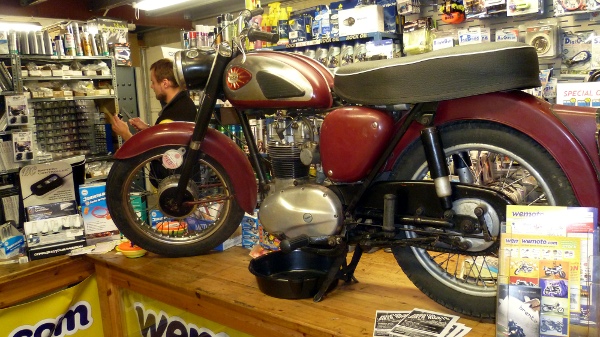
BSA C15
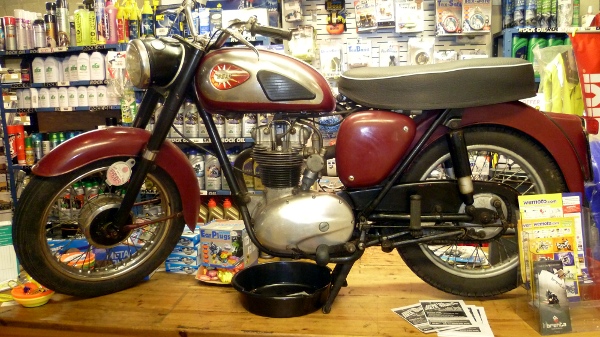
..And it's on our Wemoto shop counter if you want to come and see it!

BSA B31 in our main office

You might not want to sit on this one though

..And another nice blue C15 in the Wemoto office
....Here is a first comment from a reader - about BSA bicycles though, not Bantams:
"I used to have a maroon BSA bicycle it was fantastic I rode it all over London everyday, it went like a train. I even lent it to my friend who cycle dispatched on it (this was a while ago you understand) and then it got half inched from my garden and that was a very sad day. But I can personally vouch for what a great bicycle BSA built – never had a better one since."
Wemoto


